How long does it take to learn trading?
Introduction
This is a very common and obvious question, especially for beginners.
Moreover, since this is a serious question, it also deserves a serious answer.
So, I will answer this question from the several years of my own experience in trading and also from the experience of meeting and working with thousands of traders over the years.
Instant Gratification
So, first and foremost, I want to say that in this digital age, we are getting used to instant gratification – that is the desire to experience pleasure or fulfillment without delay. We want everything right now!!
So, if you are in the mood to watch a movie, no need to wait, go to Netflix or YouTube.
With this kind of mindset, we come to the stock market which is very flashy and exciting. Right? You keep hearing about stories of traders who doubled their money in just 1 month, or someone who made 25 lakh rupees in one trade and so our mind says “What are you waiting for?…just do it.”
And that’s where the majority of beginners go wrong.
It is because instant gratification might be okay when you are craving for a pizza or a movie, it is an absolutely bad mindset for learning a new skill.
Learning any skill takes time and the higher the market value of the skill, the longer it takes to learn it.
To be a carpenter might take a few months, a web designer takes a year but to become an engineer takes 4 years and a doctor takes at least 5 years to start practice.
So, when people come to me and ask to conduct a 2-day workshop or a day’s workshop and teach us how to trade, here is what I ask them:
“By trading, you are expecting to make money what a successful doctor or engineer would make but for learning this valuable skill, you are not even willing to invest the time it takes to become a mechanic or a carpenter?”
Do you see the gap in this expectation vs reality?
So, the bottom line is that learning to trade needs time and there are no shortcuts.
Now, the question comes, exactly how much does it take? Here, I divide this learning process into two categories – learning swing trading and learning intraday.
Let’s start with swing trading
Swing trade means that you are taking delivery of a position for a few days to few weeks. It is a perfect form of trading for working professionals.
In my experience, it takes a good 6 months to learn Swing trading.
Let’s break these 6 months down to see where exactly we need to spend that time.
The first month is required to build a solid foundation of the stock market. You need to understand exactly how the stock market works, Demat account, trading account, order types, who are FIIs, who are DII etc. etc. – all the basics.
Then, you will learn technical and fundamental analysis. Now, a lot of people think that if you know a few candlestick chart patterns, Doji, bullish engulfing, dark cloud cover etc, you have learned technical analysis. So, these patterns are part of technical analysis but the subject is much broader than that.
Next, you would be spending a month or so learning about risk management, trading psychology, money management – all these are very important topics- you cannot afford to ignore them.
After this comes the mother of all topics: futures and options. Options are arguably the most complex, yet the most important topic you would learn. And because the topics are complex, it takes a good 2 months to understand them. How are options priced?– In real life, not theory- in real life understand what does delta mean, Vega, gamma…how option strategies are designed and how they are applied in different kinds of the market?
After covering all these topics, you would come to Strategies- the good news is that learning the strategies is not that hard as it would take about a couple of weeks.
As you can see, it takes a good 6 months to learn swing trading- and that too when you have someone to guide you, share the time-tested strategies and demonstrate you live how those strategies are applied in real life. If you are doing it on your own, obviously it can take longer.
Now, let’s talk about intraday trading
Intraday trading means that you take a position and close it within the same trading session- meaning that buying and selling are happening in the same session.
For learning intraday trading, it takes about 1 year.
See, the difference between swing and intraday trading is the same as knowing how to drive a passenger car vs a Formula 1 race car.
The working of the car is the same, the engine, the accelerator work the same way and the steering wheel has the same purpose. However, what’s different in Formula 1 racing is speed. You are operating at a much higher speed.
In the same way, the knowledge you gathered for learning to swing trade is more or less the same that you need to learn intraday.
However, what is required there is practice. Practice, practice and some more practice because everything will be much faster there.
Deciding which strategy to apply, when to apply, cutting losses when they are small, selection of scripts and hundreds of other decisions that need to be made under pressure.
So, the more you practice, the more you learn about the market and your strengths and weaknesses and it takes time to master both.
There is also a practical aspect of why it takes longer to learn intraday.
See, what happens is that when you learn trading in a very short time, whatever you learn would work in that particular market context but when the market changes, you will find that those concepts are not applicable in a different market context.
The market is not static and it’s dynamic. It goes through the cycle of a bull market, bear market, accumulation, distribution, expansion, contraction, low volatility and high volatility.
For example, the traders who entered the market in 2017 were not able to cope with the volatility of 2018. The traders of 2018 had a tough time in 2019 and the traders of 2019 were not able to handle the market crash of 2020.
So, the longer you stay in the market, the higher is your likelihood of success in a different market.
Conclusion
The mindset of instant gratification will not work in the stock market. You will need to be patient and be ready to work hard. For learning swing trading, it takes at least 6 months and for intraday trading, at least a year.
So don’t get discouraged by the time required because this is a skill that will make you money for the rest of your life. There is no retirement in trading as you can trade from your home even when you’re 80.
Hence, think of the long-term prospects and learn trading right away.
Howdy!
If you’re here for the first time, let’s get introduced.
VRD Nation is India’s premier stock market training institute and we (Team VRD Nation) are passionate about teaching each and every aspect of investing and trading.
If you’re here for the first time, don’t forget to check out “Free Training” section where we have tons of free videos and articles to kick start your stock market journey.
Also, we got two awesome YouTube channels where you can continue the learning process.
Must-Read Articles
How long does it take to learn trading?
Introduction
This is a very common and obvious question, especially for beginners.
Moreover, since this is a serious question, it also deserves a serious answer.
So, I will answer this question from the several years of my own experience in trading and also from the experience of meeting and working with thousands of traders over the years.
Instant Gratification
So, first and foremost, I want to say that in this digital age, we are getting used to instant gratification – that is the desire to experience pleasure or fulfillment without delay. We want everything right now!!
So, if you are in the mood to watch a movie, no need to wait, go to Netflix or YouTube.
With this kind of mindset, we come to the stock market which is very flashy and exciting. Right? You keep hearing about stories of traders who doubled their money in just 1 month, or someone who made 25 lakh rupees in one trade and so our mind says “What are you waiting for?…just do it.”
And that’s where the majority of beginners go wrong.
It is because instant gratification might be okay when you are craving for a pizza or a movie, it is an absolutely bad mindset for learning a new skill.
Learning any skill takes time and the higher the market value of the skill, the longer it takes to learn it.
To be a carpenter might take a few months, a web designer takes a year but to become an engineer takes 4 years and a doctor takes at least 5 years to start practice.
So, when people come to me and ask to conduct a 2-day workshop or a day’s workshop and teach us how to trade, here is what I ask them:
“By trading, you are expecting to make money what a successful doctor or engineer would make but for learning this valuable skill, you are not even willing to invest the time it takes to become a mechanic or a carpenter?”
Do you see the gap in this expectation vs reality?
So, the bottom line is that learning to trade needs time and there are no shortcuts.
Now, the question comes, exactly how much does it take? Here, I divide this learning process into two categories – learning swing trading and learning intraday.
Let’s start with swing trading
Swing trade means that you are taking delivery of a position for a few days to few weeks. It is a perfect form of trading for working professionals.
In my experience, it takes a good 6 months to learn Swing trading.
Let’s break these 6 months down to see where exactly we need to spend that time.
The first month is required to build a solid foundation of the stock market. You need to understand exactly how the stock market works, Demat account, trading account, order types, who are FIIs, who are DII etc. etc. – all the basics.
Then, you will learn technical and fundamental analysis. Now, a lot of people think that if you know a few candlestick chart patterns, Doji, bullish engulfing, dark cloud cover etc, you have learned technical analysis. So, these patterns are part of technical analysis but the subject is much broader than that.
Next, you would be spending a month or so learning about risk management, trading psychology, money management – all these are very important topics- you cannot afford to ignore them.
After this comes the mother of all topics: futures and options. Options are arguably the most complex, yet the most important topic you would learn. And because the topics are complex, it takes a good 2 months to understand them. How are options priced?– In real life, not theory- in real life understand what does delta mean, Vega, gamma…how option strategies are designed and how they are applied in different kinds of the market?
After covering all these topics, you would come to Strategies- the good news is that learning the strategies is not that hard as it would take about a couple of weeks.
As you can see, it takes a good 6 months to learn swing trading- and that too when you have someone to guide you, share the time-tested strategies and demonstrate you live how those strategies are applied in real life. If you are doing it on your own, obviously it can take longer.
Now, let’s talk about intraday trading
Intraday trading means that you take a position and close it within the same trading session- meaning that buying and selling are happening in the same session.
For learning intraday trading, it takes about 1 year.
See, the difference between swing and intraday trading is the same as knowing how to drive a passenger car vs a Formula 1 race car.
The working of the car is the same, the engine, the accelerator work the same way and the steering wheel has the same purpose. However, what’s different in Formula 1 racing is speed. You are operating at a much higher speed.
In the same way, the knowledge you gathered for learning to swing trade is more or less the same that you need to learn intraday.
However, what is required there is practice. Practice, practice and some more practice because everything will be much faster there.
Deciding which strategy to apply, when to apply, cutting losses when they are small, selection of scripts and hundreds of other decisions that need to be made under pressure.
So, the more you practice, the more you learn about the market and your strengths and weaknesses and it takes time to master both.
There is also a practical aspect of why it takes longer to learn intraday.
See, what happens is that when you learn trading in a very short time, whatever you learn would work in that particular market context but when the market changes, you will find that those concepts are not applicable in a different market context.
The market is not static and it’s dynamic. It goes through the cycle of a bull market, bear market, accumulation, distribution, expansion, contraction, low volatility and high volatility.
For example, the traders who entered the market in 2017 were not able to cope with the volatility of 2018. The traders of 2018 had a tough time in 2019 and the traders of 2019 were not able to handle the market crash of 2020.
So, the longer you stay in the market, the higher is your likelihood of success in a different market.
Conclusion
The mindset of instant gratification will not work in the stock market. You will need to be patient and be ready to work hard. For learning swing trading, it takes at least 6 months and for intraday trading, at least a year.
So don’t get discouraged by the time required because this is a skill that will make you money for the rest of your life. There is no retirement in trading as you can trade from your home even when you’re 80.
Hence, think of the long-term prospects and learn trading right away.




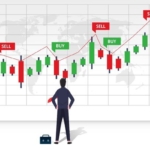





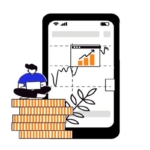



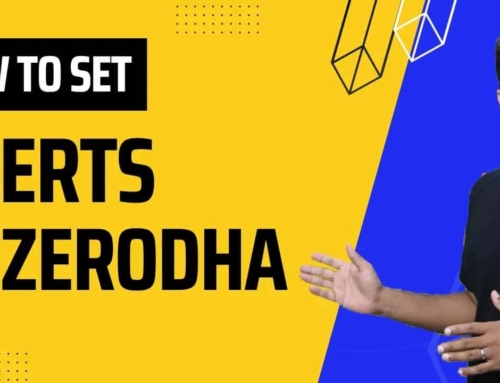
![What is Virtual Contract Note [Zerodha]](https://www.vrdnation.com/wp-content/uploads/2023/10/maxresdefault-virtual-note-500x383.jpg)
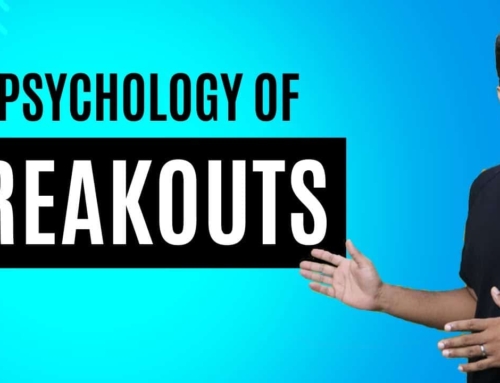
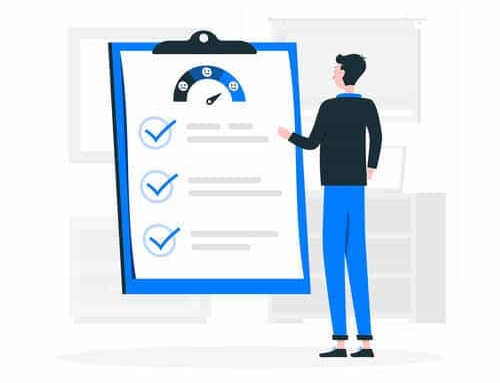

Hello VRD Team,
Greetings and Good Day….
I am a full time working professional with 21 plus years into industry. I am looking for a long term approach into stocks and to build the corpus for post retirement and also to look up trading as an extra source of income, whenever, i intend to take a break from corporate work tyranny.
By the way i am beginner and have looked at most of your videos with live examples. However, i was not sure whether there are any
training videos for:
1. Selection of Stocks for Long Term Investment.
2. Selection of Stocks for short Term Investment
3. Stock selection for Intra day trading.
4. How to understand whether a particular stock would go up or down on the given day?
5. What basic indicators should be considered for intraday trading ?
I also liked the concept of Non Directional Strategy for working professionals. It would be helpful, if there can be an content and concept to assist in understanding the “Non Directional Strategy” that can be considered as start.
It looks, i am asking for a lot and my apologies.
Look forward for your feedback
Hi Rajesh,
All these are part of the trading courses. Please explore them from here:
https://www.vrdnation.com/trading-courses
Best Regards,
Team VRD Nation
It is wonderful to learn from an expert in the field, and it inspires a lot of others.